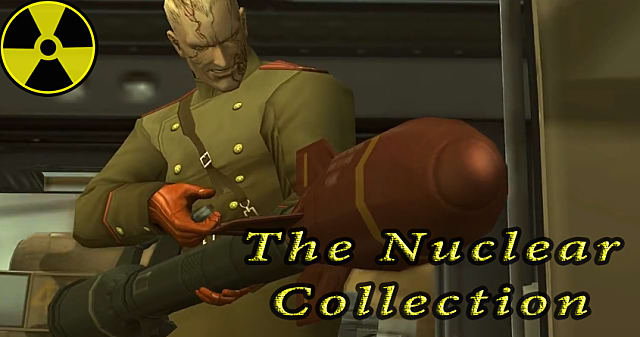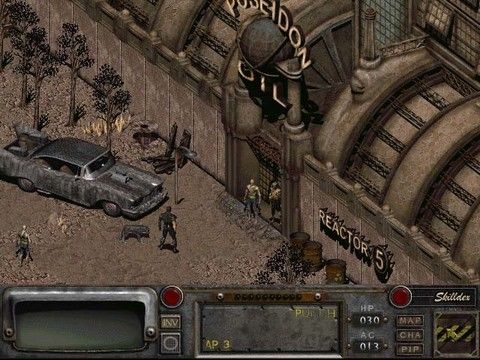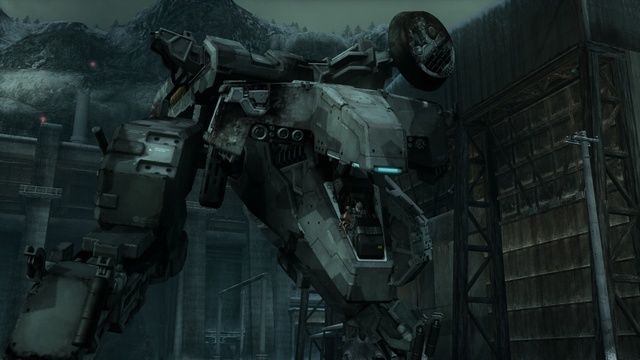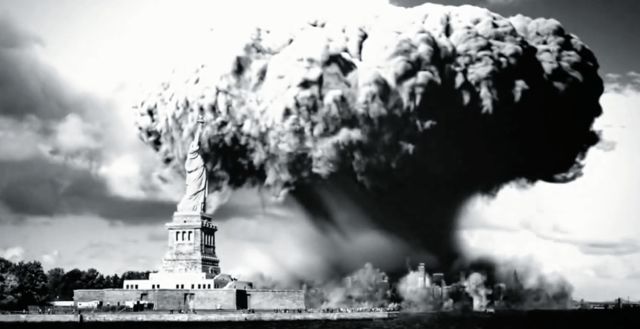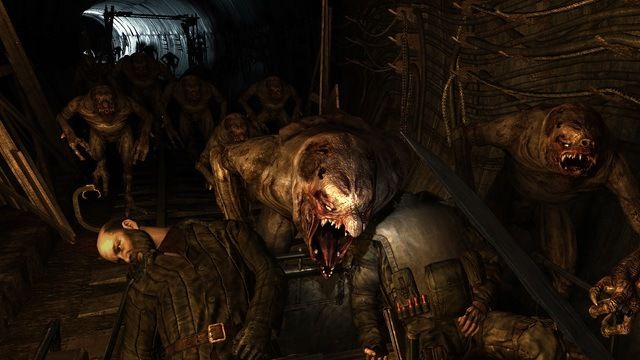Snuggle up to your Geiger counter and ready yourself for gaming’s most nuclear storylines.
Fallout
As the entire series is the aftermath of an unseen nuclear war, Fallout is a prime subject. Gamers start off inside underground societies known as Vaults, designed and built to protect citizens after nuclear war. Stepping outside of the Vault, though, we are introduced to an entire city sacked by nuclear attacks.
The series showcases the most extreme sides of the aftermath. Mutations are rampant, and water sources are heavily radiated and hazardous; but it also shows an idea of how society would dissolve after such events. The player crosses paths with rogue bandits, desolate civilizations, and oppressive leaders - the staples of a world gone mad.
Despite being set in a fictional universe, one can’t help but feel a tinge of despair when they hear the stories of survivors, sometimes literally seeing their tales of woe manifested in their physical mutations.
The Fallout series is quite possibly the best look of a world gone nuclear that gaming has to offer, and that doesn’t seem to be changing anytime soon.
Metal Gear Solid
Metal Gear?
The Metal Gear Solid series is laden with talk of nuclear weapons, so much so that the series is named for the very vessel designed to carry these deadly warheads. The original Metal Gear introduced the bipedal tank designed to launch nuclear missiles, a design concept carried over to 1998’s Metal Gear Solid. The games are known for the many complexities in the plot, but that threat of nuclear attacks is constantly looming. It wasn’t until the prequel, Snake Eater, where a nuclear device was actually physically used to drive the story forward.
In what appeared to be an act of defiance against the United States, a CIA agent codenamed The Boss allowed Soviet GRU Colonel Yevgeny Borisovitch Volgin to launch a portable nuke at a Soviet research installation.
The Boss’ actions were deemed traitorous by the United States to save face with the Soviets though it was the CIA who had provided the two portable warheads to be used to gain Volga’s trust. It was a story ripe with twists, turns, and heartbreak, kick-started by one nuclear detonation.
Wolfenstein: The New Order
Nazis have been a delight for gamers to square off against since Wolfenstein made its début in the early 90’s, but few instances of this enemy superpower have been as satisfying to battle as the representation in Wolfenstein: The New Order. It’s not just that Nazis are evil, it’s that, in The New Order, Nazis won World War II - and they did so by nuking the eastern seaboard of the United States.
With cities like New York in shambles after Germany’s use of nuclear weaponry, the Nazis were quick to win the war. Though The New Order is far from the first media to put the United States on the losing side, throwing you behind enemy lines as they revel in their earlier victory is maddening and sets the dreary tone for the game. It also makes B.J. Blazkowicz’ brutal Nazi slaughter more fun than it really should be. Especially as a former New Yorker, it’s tough not to think of a fiery Manhattan each time an unknowing German soldier unwillingly meanders into my warpath.
Shin Megami Tensei
So, this one may throw a few people off, but earlier titles in the Shin Megami Tensei series do revolve heavily around nuclear war. It may not be the driving point of the current games, but, like Interplay Entertainment and Bethesda’s series, it’s the reason the world exists in the fashion that it does.
Digital Devil Story: Megami Tensei II and Shin Megami Tensei focus on the fallout of prolonged nuclear war. Rather than being faced with a wasteland of radiation and bandits, though, gamers are introduced to a version of Tokyo infested with demons. Thirty-six years before the start of Megami Tensei II, a nuclear war, incited by Satan, destroyed the world and opened up trans-dimensional portals, allowing demons to come and go as they please. In Shin Megami Tensai, nuclear warheads are used to suppress a demon invasion, though the creeps still roam the city freely decades after.
Atlus’ unique spin on the aftermath of nuclear war is refreshing, especially to one who enjoys demons, transdimensional rifts, and the Devil.
Metro 2033
Good radioactive puppies!
Like Fallout, Metro 2033 presents a city in shambles after an apocalyptic nuclear attack. Also like Fallout, Metro shows how people in the area deal with such devastation. Where the two diverge, outside of Metro being more action-oriented, is that THQ’s first-person shooter is much grittier.
Fallout certainly represents a desolate world, but Metro’s just comes across as a scarier, more overwhelming, and even more-so depressing to witness. That may be because you spend a good part of Metro underground, avoiding the terrors that lurk in the Russian wasteland. On the surface, Russia is completely uninhabitable, and any time spent must either be brief or accompanied with a working gas mask and some heavy artillery.
Though you don’t get to see the events that lead up to this starkness, you can definitely get a feel for just how devastating it was, from the grumblings within the Metro to the deadly monstrosities that now control Russia’s surface.
Well, Vault Dwellers, think a pivotal title was missed? Leave a comment below, discuss, enjoy the conversation - you never know when the big one might be dropped.
